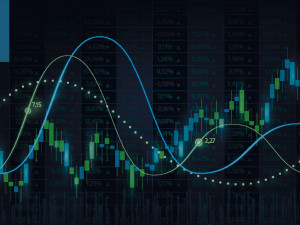
Economic clouds gather for Sterling
Morning mid-market rates – The majors
March 6th: Highlights
- Service sector slows for second month
- Pound at two month low
- Dollar dips following Yellen comments
Sterling Suffers as Data Points to a Slowdown
The services sector is an important component of U.K. GDP since manufacturing has become far more specialised. A fall to 53.3 from 54.1 in January points to a slowdown in Q1 GDP to around 0.4%.
The Chancellor will deliver his budget to the U.K. Parliament on Wednesday. He is likely to outline the cost of Brexit and give some detail on how it will be paid for. Traditionally the man in the street is interested only to see what tax rises will be applied to alcohol and tobacco, but this year there will be concern over cuts to social services and other savings to create a Brexit “war chest”.
Today, Bank of England Deputy Governor Charlotte Webb makes a speech in the City of London. Traders will dissect her remarks to gain further intelligence on how she is likely to react in MPC meetings, following her comments recently (close to but not actually confirming her as a hawk) that the Bank of England needed to be more active than reactive against the threat of inflation.
Considering your next transfer? Log in to compare live quotes today.
Yellen speech confirms rate expectations.
In typical fashion, the dollar corrected from its recent bout of strength as traders participated in a round of “buy rumour, sell fact”. The dollar index fell by 0.5% closing on its lows at 101.38. The euro recovered a little ground against the weaker dollar closing near to its high at 1.0615. This followed reports that the centrist candidate Emmanuel Macron had opened what many see as an unassailable lead should he run against right wing candidate Marine le Pen in a runoff for the French Presidency.
Against the Pound, the single currency regained the 0.8600 level following the weaker than expected U.K. data.
Overnight, USD slipped further from its highs against the JPY on news that North Korea launched four missiles, testing their progress and Donald Trump’s patience.
Whilst there has been plenty of missile launches over the past year as North Korea develops what it calls its missile defence system, this is the first during the current President’s tenure and should he do more than threaten, the dollar may fall further as the JPY benefits from its safe haven status. The dollar fell by 0.2% from its close on Friday to trade at 113.85.
Big week begins with U.S. data
Inflation data for Australia has already been released today, showing a fall of 0.3% from January, leaving it unchanged from a year ago. This entirely confirms the RBA view that rates have bottomed and the short term fate of the AUD will be determined by a number of data releases by their biggest trading partner, China, during this week.
The RBA meets tomorrow, when rates should be left unchanged following a more hawkish speech from the Governor a couple of weeks ago, backed by the ensuing data releases.
This week’s events of note
Monday
- China Interest Rate Decision – Further AUD volatility likely.
- U.S. Factory Orders – Further justification of rate hike.
- Greece GDP – Positive growth, however small to boost Eurozone economy.
Tuesday
- Australia Rate Decision – No Change expected although RBA has stated rates have bottomed.
- U.K. House Prices – Small fall probable adding to tentative economic slowdown.
- Eurozone Q4 GDP – 1.5% s.a. (seasonally adjusted) expected.
Wednesday
- China Trade Balance – Meaningful for a lot of countries; Australia, U.S. & U.K. in particular
- German industrial Production – The main driver of E.U. growth. A 0.5% n.s.a fall likely.
Thursday
- China Producer Prices – A 7% rise possible on the back of higher commodity prices.
- China Consumer Prices – Inflation starting to take hold. Rare decision earlier influenced by CPI.
- ECB Rate Decision – No change likely as growth still too weak and inflation controlled other than in Germany!
- ECB Press Conference – Justification for low rates.
Friday
- China Industrial Production – 6% and steady but fallen from 10%+ last year.
- U.S. Non Farm Payrolls – The final clincher for the rate hike. Growth of 200k expected but watch previous month’s revision.
- U.S. Employment Rate – Unchanged at 4.8%. Below 5% considered full employment.
- U.S. Average Earnings – The one fly in the rate hike ointment. A 2.5% read pretty weak still.
Have a great day!

About Alan Hill
Alan has been involved in the FX market for more than 25 years and brings a wealth of experience to his content. His knowledge has been gained while trading through some of the most volatile periods of recent history. His commentary relies on an understanding of past events and how they will affect future market performance.”



